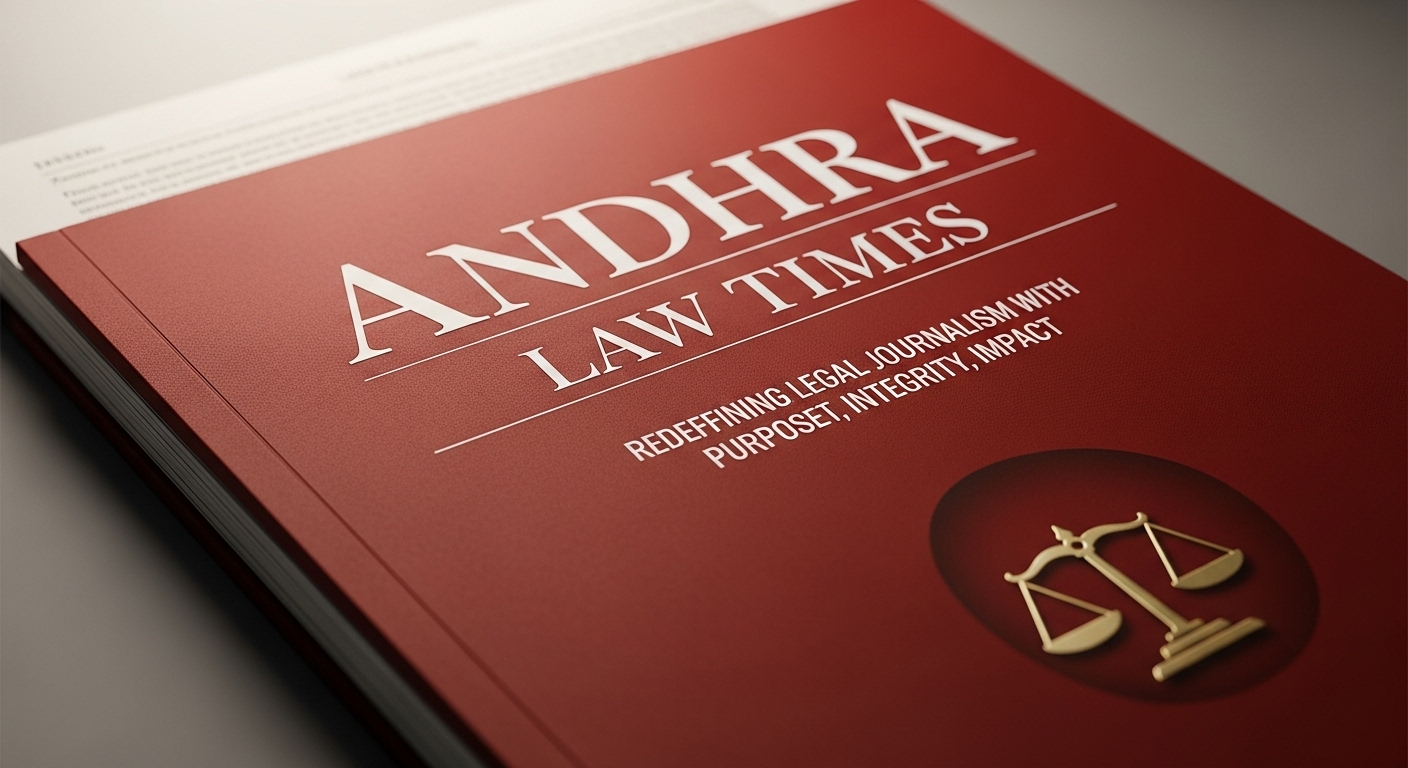LAW
Navigating the Aftermath: Your Essential Guide to Car Accident Attorneys

Dealing with a car accident can be very difficult. Your car may be damaged, and you might be injured. This can also lead to financial problems from medical bills and missed work. An experienced car accident attorney can help you in the aftermath of an accident. They will know the laws and processes to help you get full and fair compensation.
Understanding the Role of a Car Accident Attorney
A car accident attorney is a lawyer who helps people who were injured or suffered damage in auto accidents. They focus on getting their clients the best financial recovery and guide them through the legal process after an accident. Some of an accident attorney’s key duties are:
- Reviewing police reports to assess who is at fault
- Gathering evidence like photos and witness statements
- Negotiating with insurance companies or other drivers involved
- Filing paperwork for claims and lawsuits if needed
- Working with your doctors and other experts to assess injuries and damages
Having an attorney’s legal expertise on your side levels the playing field against big insurance companies. They advocate for clients still recovering from accident trauma.
Key Responsibilities of a Car Accident Attorney
A car accident attorney’s responsibilities encompass a wide range of tasks aimed at maximizing their clients’ chances of securing a favorable outcome.
Case Evaluation: Review police reports, medical records, and evidence to develop a legal strategy and estimate the potential case value.
Investigation: Conduct witness interviews, take photos and measurements of the accident scene, collect crash data, and consult technical and medical experts.
Negotiation: Negotiate directly with insurance companies to demand just compensation for the victim’s damages and losses.
Litigation: File paperwork, motions, and evidence to advance clients’ cases in court if a fair settlement is not reached outside court.
Client Communication: Provide clear and caring legal counsel to clients on their options and probable outcomes during their recovery journeys.
When to Hire a Car Accident Attorney
While not every car accident necessitates the involvement of an attorney, there are certain situations where seeking legal representation is strongly advised.
Severe Injuries: Permanent disability or serious injuries like brain trauma call for an attorney to translate medical implications into lifetime care costs.
Disputed Liability: When multiple parties dispute blame for the accident, independent legal investigation and advocacy protect your interests.
Insurance Company Disputes: If insurers deny, delay, or dispute your rightful claim value, aggressive representation is critical.
Complex Legal Issues: Where statutes of limitations, forms, and procedures are involved, hiring a lawyer prevents losing rights on technicalities.
Benefits of Hiring a Car Accident Attorney
Enlisting the services of a car accident attorney offers numerous advantages that can significantly impact the outcome of your case:
Legal Expertise: Their specialized knowledge of injury laws ensures you receive the maximum financial recovery allowed.
Maximized Compensation: Experienced attorneys estimate damages accurately and negotiate relentlessly to increase payouts.
Reduced Stress: Let your lawyer manage the complex legal aspects so you can focus on healing physically and emotionally.
Peace of Mind: Justice and closure becomes more attainable with a seasoned attorney fighting to protect your rights.
Choosing the Right Car Accident Attorney
Selecting the right car accident attorney is crucial to the success of your case. Here are some key factors to consider:
Experience: Seek attorneys handling accident cases for many years with proven results. Check client reviews too.
Track Record: Compare past case results and settlement amounts instead of just relying on lawyer claims about success rates.
Communication: Pick lawyers explaining legal aspects clearly in everyday terms while addressing all your concerns patiently.
Fees: Ask about all charges upfront and compensation models before signing any contingency fee agreement.
Comfort Level: Ultimately, you want an attorney to make you feel heard, understood, and well advocated for through the turbulent process.
The Car Accident Claim Process
The car accident claim process typically involves the following steps:
Initial Consultation: Meet with your car accident attorney to discuss the crash details, gather preliminary evidence, and outline the legal strategy. Signing the representation agreement formally engages their services.
Investigation and Evidence Gathering: Your lawyer will collect police reports, interview eyewitnesses, take photos of vehicle damage and the accident site, download vehicle telemetry or black box data, and consult medical and technical experts to validate injuries and duties breached.
Demand Letter: Based on gathered evidence on factors like crash mechanics, property damage, and injury diagnoses, your attorney issues a formal demand letter urging the insurer to settle within policy limits outlining clear justifications.
Negotiation: Your lawyer negotiates and responds to any settlement counter-offers from insurers to maximize claim value for lost income, medical bills, disabilities suffered, and pain/suffering damages while accounting for contingencies like comparative negligence defense.
Litigation (if necessary): If insurers refuse reasonable settlement, your attorney files a lawsuit outlining counts like negligence and liability while gathering evidence like testimonies to prove and argue the case in trial pushing for maximum eligible compensation.
Factors Affecting Compensation in Car Accident Cases
Several factors can influence the amount of compensation you may be entitled to in a car accident case, including:
Severity of Injuries: The extent of the short and long-term impact of physical trauma suffered affects medical costs, disability levels, and projected care needs.
Medical Expenses: Immediate and ongoing treatments covered, like hospitalization, surgeries, therapies, or in-home care, add to case value.
Lost Wages: The past and future lost earning capacity due to inability or reduced ability to work gets included in damages.
Property Damage: Assessing repair costs or total loss values for vehicles and valuables impacted by crashes contributes to reimbursement sought.
Pain and Suffering: Mental anguish, emotional trauma, and reduced life enjoyment are accounted for in settlements too.
Liability: The clear fault percentages assigned to each party involved significantly determine compensation amounts owed to the victim.
Common Challenges in Car Accident Cases
Car accident cases can present various challenges that may complicate the process of securing compensation.
Disputed Liability: When multiple parties assess blame differently about the accident cause, it leads to lengthy investigations and complex legal attribution of fault percentages for damages owed.
Pre-Existing Conditions: If victims had prior injuries or medical issues, proving newer injury links to the crash and not inflating impairment levels poses burdens requiring medical experts.
Comparative Negligence: If victims are even partially blamed for the collision, damage award amounts get reduced by their attributed fault percentage, complicating calculations.
Insurance Company Tactics: Dishonest insurers often delay, deny, or dispute valid claims through aggressive tactics, preying on victims’ lack of legal depth.
How a Car Accident Attorney Can Help Overcome Challenges
A skilled car accident attorney can help you navigate these challenges and increase your chances of securing a fair settlement or verdict. They can:
Investigate the Accident Thoroughly: Veteran lawyers leave no stone unturned in reconstructing the exact accident mechanics through technology, witnesses, and specialists. This builds an ironclad narrative on fault and overriding causation, erasing doubts about pre-conditions, comparative fault percentages, and proving clear liability.
Negotiate with Insurance Companies: Seasoned attorneys have vast experience countering even the most unreasonable insurer delays and denials through multi-pronged negotiation pressures backed by evidence leaving no wiggle room until a just claim value gets offered.
Litigate Your Case: Where settlement talks reach an impasse, lawyers adeptly file lawsuits, frame pertinent charges, gather further evidence like medical/expert testimonies, and skillfully argue the case before a judge/jury to maximize verdict awards despite opposition tactics.
The Importance of Early Legal Representation
Seeking legal representation as soon as possible after a car accident is crucial. An attorney can:
Preserve Evidence: Quick photographs, crash site details, vehicle part analyses, and eyewitness statements get reliably collected before disappearing.
Protect Your Rights: Statutes of limitations get suspended regarding lawsuits and specific defenses get invoked, shielding clients’ entitlements.
Deal with Insurance Companies: Insurers often quickly reach out after accidents hoping victims make recorded statements or sign away rights before consulting attorneys, a risky move. Lawyers handle discussions early.
Conclusion
Going through a car accident leads to physical suffering, emotional turmoil, and overwhelming uncertainty, trying to piece life back while fighting for justice solo. However, the law provides protections and pathways for rehabilitation. An experienced car accident attorney levels the playing field getting you maximum compensation under the law swiftly and reducing anxieties about dealing with complex legal processes directly. With an expert by your side focused on your best interests, justice moves from elusive to entirely achievable. Letting a trustworthy lawyer handle negotiations confidently ultimately empowers you to regain health and stability after tragic accidents. Your recovery starts now.
LAW
Building a Strong Estate Plan: Essential Documents Everyone Needs

Creating an estate plan is one of the most important steps you can take to ensure your wishes are honored and your loved ones are protected. Whether you are planning for aging, incapacity, or the orderly transfer of wealth, having a clear set of documents is essential. Consulting with professionals who specialize in Mooresville Elder Law ensures that all legal nuances are addressed and your plans are thoroughly documented.
Life is unpredictable, but a thoughtful estate plan can minimize uncertainty, reduce family conflicts, and help your family avoid unnecessary expenses or legal hurdles. Even if you think you’re “too young” or “don’t have enough assets,” everyone benefits from a detailed strategy for their health care preferences, guardianship wishes, and distribution of savings or property after death.
Estate planning is not just for the wealthy; it’s for anyone who wishes to have a say in their care and asset management in the event of an unexpected occurrence. Without the proper documents, state laws and courts make those decisions for you, potentially contradicting your preferences and burdening your loved ones with avoidable complexity.
Last Will and Testament
Your will acts as the foundation of your estate plan. It allows you to declare how property, money, and personal possessions will be distributed after your death. More importantly, a will appoints an executor who will carry out your wishes and manage your final affairs. Parents of minor children can name a guardian to raise their children if they are no longer able to do so. Without a valid will, state laws will determine how your assets are divided, which can lead to outcomes you might not want for your heirs.
Durable Power of Attorney
A Durable Power of Attorney is an essential tool in comprehensive estate planning. It allows you to designate someone you trust to act on your behalf for legal and financial matters if you become incapacitated. This person can manage bill payments, property transactions, tax filings, and even business interests, helping to avoid costly, court-appointed guardianships. Incorporating a POA into your estate plan ensures that your affairs are handled smoothly, reducing stress and expense for your loved ones during an already challenging time.
Healthcare Power of Attorney and Living Will
Healthcare Power of Attorney
This document allows you to name an agent to make medical decisions on your behalf if you become unable to do so. Clear designation of a trusted decision-maker prevents uncertainty and maintains continuity of care, sparing family members the pain of disagreeing over treatment options during crises.
Living Will
A Living Will, also called an advance directive, communicates your preferences regarding life-sustaining measures and care at the end of life or in cases of severe incapacity. It’s critical for ensuring that your values and choices are respected by healthcare providers and loved ones alike. Together, these documents give your family clarity and authority during stressful times.
Revocable Living Trust
A revocable living trust enables you to transfer assets into a trust that manages them for your benefit during your lifetime and distributes them efficiently after your death. Unlike a will, it avoids probate, speeds up the transfer process, preserves your privacy, and can help with incapacity issues. These trusts are flexible, allowing changes to beneficiaries or terms, which is especially helpful for managing complex estates or multiple properties.
Beneficiary Designations
For accounts such as retirement plans, life insurance, and certain investment accounts, beneficiary designations determine the direct recipient of those funds upon your passing. These designations override instructions in your will, so it is essential to regularly review and update them, especially after significant life changes, such as marriage, divorce, or the birth of a child. Unupdated designations could inadvertently direct assets to unintended individuals, regardless of your current wishes.
Regular Review and Updates
Estate planning documents need regular updates to mirror life changes like marriage, divorce, new children, asset adjustments, or legal updates. The National Council on Aging recommends revisiting your estate plan every three to five years or following major life events. It’s advisable to include digital assets, personal instructions, or pet care directives. Maintaining current documents helps ensure your wishes are clear and eases the burden on your loved ones.
Conclusion
Taking a proactive approach to estate planning with the appropriate set of documents safeguards your wishes and eases decisions for your loved ones. By periodically reviewing and updating your plan with experienced professionals, you ensure control over your assets and healthcare, regardless of future events. The confidence gained from solid estate planning is priceless—not only for you but also for those you care about.
LAW
Andhra Law Times: Redefining Legal Journalism with Purpose, Integrity, and Impact

In an era where journalism is under intense scrutiny, legal media must do more than report cases or publish verdicts. The most respected platforms are those that combine sharp analysis, ethical rigor, and a commitment to social justice. Andhra Law Times is one such rising voice—an emerging leader in legal journalism that bridges traditional reportage with meaningful impact, shaping how law is understood, discussed, and applied in Andhra Pradesh and beyond.
This article delves into what makes Andhra Law Times distinct: its editorial philosophy, its alignment of performance with social responsibility, and why it represents the future of journalistic leadership in legal reporting.
Who Is Andhra Law Times?
Andhra Law Times is a legal news and commentary platform. Though relatively new on the landscape, it has steadily gained recognition for its nuanced reporting, expert commentary, and dedication to accessibility. It covers court judgements, legislative developments, public interest litigation, and rights issues—yet what sets it apart is how those stories are told: with clarity, context, and concern for the communities affected.
More than just breaking news, Andhra Law Times positions itself as a bridge: between judges and the public, between legal theory and lived experience, between governance and accountability. Its contributors include practicing lawyers, scholars, activists, and citizen journalists, all working together to ensure law is not just a formality, but a force for justice.
A Leadership Philosophy Rooted in Purpose
At the heart of Andhra Law Times lies an editorial philosophy built on purpose-driven journalism. Its core values include:
-
Empathy in Reporting
Stories are not just events—they’re about people. Andhra Law Times emphasises the human consequences of legal decisions, highlighting victims, underrepresented voices, and the socio-cultural contexts in which law operates. -
Integrity & Transparency
Legal journalism faces risks: misinterpretation, bias, sensationalism. Andhra Law Times insists on accurate sourcing, full context, and transparency about its editorial processes. Corrections are published openly; conflicts of interest are disclosed. -
Accessibility & Inclusion
Legal language is often arcane. To bridge the gap, Andhra Law Times translates complex judgments into clear writing, provides summaries, infographics, and local language versions. It works to ensure citizens—regardless of educational background—can understand their rights, obligations, and recourse. -
Social Justice Orientation
The platform does not shy away from covering issues that matter: rights of marginalized communities, environmental law, labor rights, gender justice. It aims to hold institutions accountable and to highlight systemic issues, not just isolated legal matters.
Bridging Performance with Impact
Leadership in legal media isn’t only about moral purpose; it’s also about excellence in execution. Andhra Law Times has managed to merge the two in a way that is compelling, sustainable, and socially important.
-
Quality Reporting: Articles are fact-checked diligently; legal specialists are consulted; and deeper features are produced—on constitutional law, administrative law, or public interest litigation—going beyond mere headlines.
-
Innovative Storytelling: Andhra Law Times uses multimedia—podcasts, video explainers, interviews, and infographics—to make dense legal topics more engaging. For example, a complex Supreme Court decision is broken down via animated explainer videos so people outside the legal profession can follow.
-
Community Engagement: Not just reporting on issues, Andhra Law Times partners with NGOs, legal aid societies, and law schools to host public forums, webinars, and workshops—helping citizens know where to find legal help, how to file complaints, how the law impacts daily life.
-
Sustainability & Ethics: Advertising is clearly marked; sponsored content is separated; the platform avoids sensationalizing sensitive legal issues for clicks. It also invests in its team: ensuring fair compensation for contributors, diversity of voices, and safe working conditions for reporting.
Influence in the Digital Age
Digital platforms are reshaping how people consume legal news. Andhra Law Times has embraced these changes wisely, seeing them as opportunities to amplify impact rather than mere traffic generators.
-
Social Media Advocacy & Education: Andhra Law Times maintains active presence on platforms like Twitter, Instagram, and LinkedIn, not just to share articles, but to spark conversation—debates on legal reform, rights, policy changes. Followers are encouraged to ask questions, share stories, and participate in democracy.
-
Thought Leadership: Editorials and op-eds are published that don’t just comment on legal issues but propose solutions: reforms to outdated laws, suggestions for improving access to justice, critiques of legal system inefficiencies. By doing so, Andhra Law Times positions itself as more than observer—it becomes a catalyst for change.
-
User-Generated Content & Local Voices: Recognizing that law plays out differently in small towns and villages, Andhra Law Times solicits articles and reports from local correspondents. Awareness of local customs, languages, and conditions helps it avoid a one-size-fits-all view.
Why Andhra Law Times Matters
In today’s socio-legal climate, legal information is power. Andhra Law Times matters because:
-
It builds legal awareness, enabling people to understand their rights, redress mechanisms, and how to participate in justice systems.
-
It enhances accountability, by shining light on judicial and governmental institutions, demanding transparency and reforms where needed.
-
It supports legal empowerment of marginalized groups who historically have lacked voice, resources, or representation.
-
It reinforces rule of law: in democracies, laws matter only if known, trusted, and fairly enforced. Andhra Law Times helps ensure laws don’t remain abstract but are applied in context, with fairness.
Challenges and Opportunities Ahead
Even as Andhra Law Times gains traction, its path is far from free of obstacles. Recognizing and navigating them will define its long-term success.
-
Balancing Speed with Accuracy: In breaking headlines, there is pressure to publish quickly. But legal reporting demands precision. Errors can mislead, harm reputations, or misinform the public.
-
Monetization without Compromise: Generating revenue—through subscriptions, advertising, sponsored content—can risk diluting editorial independence. Andhra Law Times must find models that support integrity.
-
Access in Rural & Underrepresented Areas: Internet access, literacy, language barriers are still obstacles. To have true impact, coverage must reach those who are least heard.
-
Maintaining Diversity of Voices: As platforms grow, institutional pressure, groupthink, or selection bias can creep in. Ensuring diverse contributors—not just legal professionals, but activists, grassroots leaders, local correspondents—is vital.
But each challenge is also an opening:
-
Investment in fact-checking tools, legal translation, local languages.
-
Subscription tiers, membership models, grants, partnerships with foundations.
-
Offline outreach: workshops, print summaries, radio, or community gatherings.
-
Mentorship programs for new writers, especially from underrepresented backgrounds.
Looking Ahead: The Vision for Andhra Law Times
The trajectory of Andhra Law Times signals a shift in what leadership in legal journalism can look like. As it continues to evolve, it may achieve several new milestones:
-
Expanding its regional reach, possibly beyond Andhra Pradesh, into national or pan-South Indian legal coverage, while retaining its local flavor.
-
Establishing a legal education wing: training programs for law students, paralegals, or community legal educators.
-
Building a repository of legal resources: free guides, searchable databases of judgments, easy-to-use toolkits for citizens.
-
Collaborations with tech platforms: legal tech startups, AI summarization of judgments, mobile apps for citizens to lodge grievances or track cases.
-
Advocating for policy reforms: using its platform to influence legislation, access to justice reforms, or judicial procedural improvements.
A Model for Leadership in Journalistic Purpose
Andhra Law Times is more than a news platform—it’s a model of what leadership in legal journalism can become. It embodies the idea that success is not just about reach or clicks—but about trust, impact, and responsibility. In a time when law shapes everyday life—during pandemics, environmental crises, social movements—the need for legal journalism that is reliable, empathetic, and justice-oriented is greater than ever.
By combining performance with purpose, Andhra Law Times demonstrates that journalism, especially around something as crucial as law, need not choose between integrity and influence. Its journey shows that ethical leadership in media is not just inspirational—it’s essential.
LAW
Child Custody Challenges: Understanding Your Rights and Options

Navigating child custody can feel overwhelming, especially during an emotional time. Understanding your rights and options is the first step to making confident, informed decisions.
Whether facing a divorce, separation, or a change in family circumstances, knowing what to expect helps reduce stress and protect your child’s best interests. Custody challenges vary, but you don’t have to face them alone.
With the right knowledge and support, you can work toward a solution that ensures stability and care for your child. Let’s break down the key points so you can move forward with clarity.
The Impact of Domestic Violence
Domestic violence can have a serious effect on child custody decisions. Courts always prioritize the child’s safety and well-being, so any history of abuse is taken very seriously.
A parent accused of violence may face limited or supervised visitation, or in some cases, lose custody altogether. Even if the child wasn’t directly harmed, witnessing violence can impact their emotional health.
That’s why it’s important to bring all facts forward. If you or your child is in danger, seeking legal and protective help right away is key to keeping everyone safe and ensuring a fair custody arrangement.
Geographic Relocation and Custody Changes
If one parent wants to relocate, they often need permission from the other parent or the court. The court will consider how the move affects the child’s schooling, family relationships, and overall stability.
Even if the move is for a job or a better life, it must still support the child’s best interests. If parents can’t agree, a judge will decide based on the facts.
Planning and communicating openly can help avoid unnecessary conflict and stress for everyone involved.
Substance Abuse Issues
Courts are careful to protect children from unsafe or unstable environments. If there’s evidence of drug or alcohol misuse, the court may limit custody or require supervised visits.
But it’s not always permanent. A parent who seeks help and shows improvement may regain custody rights over time. The focus is always on what’s best for the child.
Support from counselors, treatment programs, and legal professionals can make a big difference in moving forward in a healthy, safe direction.
The Role of Mediation in Custody Disputes
Mediation offers a peaceful way to handle custody disagreements without going to court. A trained mediator helps parents talk through their concerns and find workable solutions together.
This process is often quicker, less expensive, and less stressful than a court battle. Mediation focuses on cooperation and puts the child’s needs first.
With guidance from trusted professionals like this Springdale car accident lawyer, parents can find fair agreements that work for both sides.
Choosing mediation can help families move forward with less conflict and more understanding, which is important when children are involved.
Protecting Your Child’s Best Interests
Protecting your child’s best interests is the heart of every custody decision. By staying informed and seeking the right support, you can make choices that lead to a brighter, more stable future.
Don’t face custody challenges alone. Reach out to trusted legal professionals who can guide you every step of the way. Your child deserves security, care, and a plan that puts them first.
Did you find this article helpful? Check out the rest of our blog now!
-

 HEALTH2 years ago
HEALTH2 years agoIntegrating Semaglutide into Your Weight Loss Plan: A Practical Guide
-

 HOME IMPROVEMENT2 years ago
HOME IMPROVEMENT2 years agoHow to Choose the Perfect Neutral Area Rug for Every Room
-

 LAW2 years ago
LAW2 years agoTeenage Drivers and Car Accidents in California: Risks and Parental Liability
-

 CONSTRUCTION2 years ago
CONSTRUCTION2 years agoConstruction Site Safety Regulations in New York and Your Rights as a Worker
-

 LAW2 years ago
LAW2 years agoPost-Divorce Considerations in California: Modifications and Long-Term Planning
-

 HOME2 years ago
HOME2 years agoSandra Orlow: The Teen Model Who Captivated the Internet
-

 FASHION2 years ago
FASHION2 years ago7 Celebrity-Inspired Elegant Summer Dresses For 2024
-

 FINANCE2 years ago
FINANCE2 years agoDigital Asset Management in Florida Estate Planning


